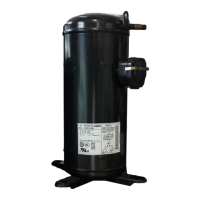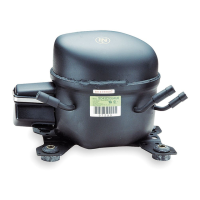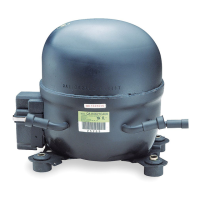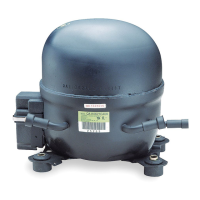24
3.12.1 Compressor Functional Check
The following procedures should be followed to determine if the compressor is functioning properly:
1) Voltage of the unit should be measured and verified as correct.
2) An evaluation of the electrical system should be performed next. The motor should be checked by using
continuity and short to ground testing. The internal motor protector should be given time to reset if a
continuity break is found in the motor windings. External breakers and associated wiring should be
checked.
3) Operation of indoor and outdoor fan/blower should be checked and verified as correct.
4) Check the refrigerant charge levels by connecting service gauges to the suction and liquid service valves
and then turning on the compressor. Correlate the operating pressures to the system manufacturer
specifications for the existing conditions under which the unit is operating.
5) On heat pump, check that the reversing valve is operating properly and verify that compressor current is
within published compressor specifications at the proper operating conditions. If there is a significant
deviation from current published specifications occurs (+/-15% or more) this may indicate a defective
compressor.
3.12.2 System Evacuation
When evacuating a compressor in the field, it is extremely important to use a vacuum manifold set with at
least 2 vacuum lines connected to the system. One line connected to the high side and the other connected
to the low side of the system. This procedure is necessary to ensure the system is completely evacuated,
since the scroll sets can seal under some non-energized conditions and thus isolate the high and low sides
from each other. If there is refrigerant left in the system, this can create a hazard when unbrazing the piping.
When compressor is replaced, the filter-dryer should also be replaced.
3.12.3 Remove the Failed Compressor
The preferred method of remove a compressor is to cut the connecting lines using a tubing cutter. However,
unbrazing is also acceptable using the following precautions. Check to be sure all refrigerant has been
evacuated using the procedure above in 3.12.2. If there is still refrigerant in the system, this when combined
with the compressor oil can ignite if it comes in contact with a flame.
(1) Use the suitable welding machine or tools to remove the connecting pipes, screws, flanges or service
valves;
(2) Check the oil in failed compressor. If oil is in black color (the normal color of oil for R22 models is light
yellow and colorless for HFC models), if necessary to clean the system piping before installing new
compressor.

